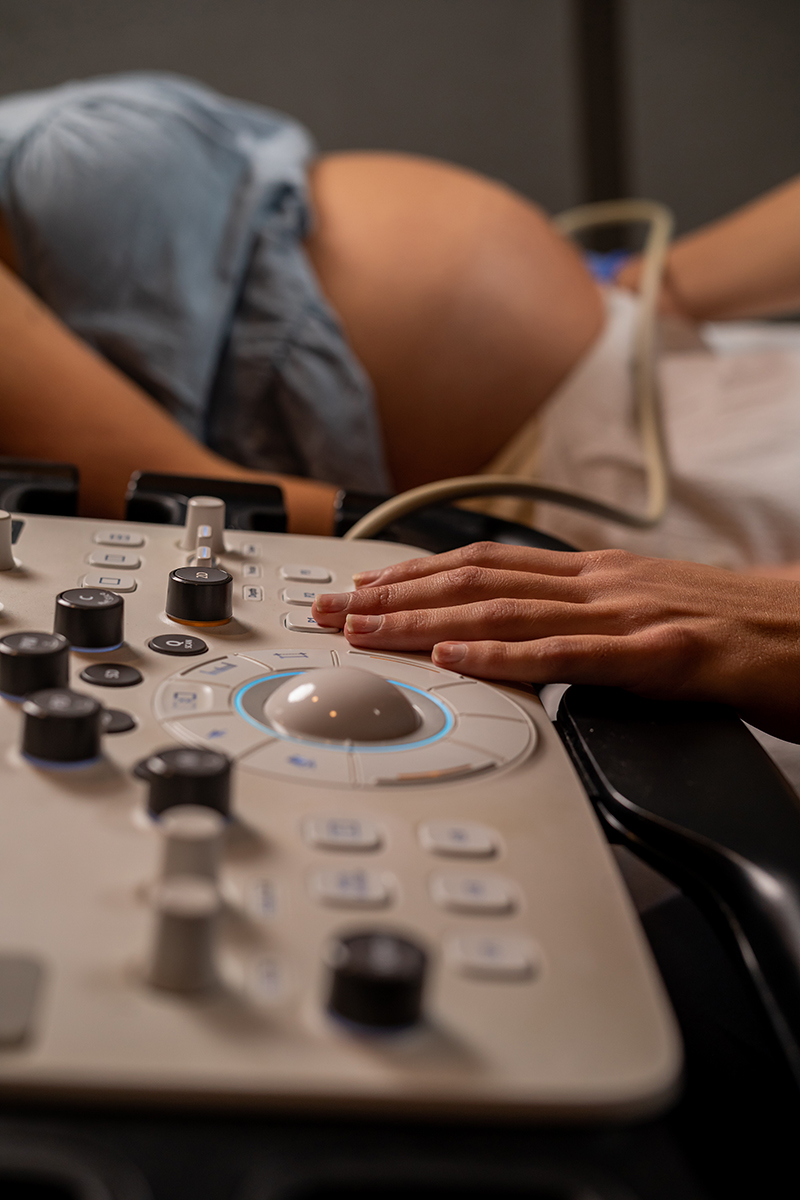
There is a lot to consider and plan for during pregnancy, and our team at ROC is here to help guide our patients through the process with as little worry as possible.
That’s why we offer all types of prenatal screening to patients across all our locations. Prenatal screening is a great place to start to ensure the health and wellbeing of your baby.
Unlike a diagnostic test, a screening test does not give a definite result. However, it can indicate if there is an increased or decreased risk for a particular problem in the developing baby. Screening is advantageous in that that there is no risk to the pregnancy. That said, with screening comes the chance of false positives or negatives.
Early Prenatal Screening
First trimester screening is performed between 11 and 13 weeks gestation, and involves a specialized ultrasound and a blood test. Ultrasound technologists must have special certification to perform first trimester screening. The screen is used to detect an increased risk for Down Syndrome, Trisomy 13, and Trisomy 18. These three conditions are chromosomal abnormalities that can result in varying degrees of intellectual disability and birth defects for a developing baby.
With ultrasound, a special measurement, called nuchal translucency, is taken. This is a measurement at the back of the baby's neck. With ultrasound the sonographer also attempts to see the nasal bone. Blood work is also done. The ultrasound measurements, blood work and the woman's age are combined to determine her personalized risk of having a baby with Down Syndrome, Trisomy 18, and Trisomy 13. The result of the screening test is usually available within one week. First trimester screening can only give an estimate of risk such as 1 in 100, and has a detection rate of 90% or greater. This means that not all babies with these conditions will test positive on the screen. This means a normal result does not guarantee that the in utero baby does not have one of the three conditions. The only way to know for sure if a baby has one of these chromosomal abnormalities is to perform a diagnostic test such as CVS or amniocentesis.
Second Trimester Screening
Second trimester screening, such as a quad screen, is a blood test that is typically performed between 15 and 20 weeks of gestation. This screening also is used to detect an increased risk for Down Syndrome and Trisomy 18; however, the detection rate is not as high as with first trimester screening. Second trimester screening can also detect an increased risk for open spine defects such as spina bifida.
Non-Invasive Prenatal Testing
The newest screening available is called non-invasive prenatal testing or NIPT. NIPT is offered through several different laboratories in the United States, and goes by the names MaterniT21Plus, Harmony, and Panorama, to name a few. NIPT is performed by analyzing circulating cell-free fetal DNA in the mother’s blood. NIPT has the highest detection rate of any screen currently available, and is more comprehensive.
In addition to screening for Down Syndrome, Trisomy 13, and Trisomy 18, NIPT will also detect an increased risk for X and Y chromosomal abnormalities. NIPT is a blood test, and can be performed from 10 weeks gestation on with results generally available within seven to ten days. NIPT is available for all pregnant women but particularly those in the following categories:
- Advanced maternal age (age 35 or older at delivery)
- Abnormal first or second trimester screen results
- Family history of certain chromosomal abnormalities
- Abnormal ultrasound suggestive of a chromosomal abnormality
While NIPT has a high detection rate for the major chromosomal abnormalities, it is not diagnostic, which means false positives do sometimes occur. CVS or amniocentesis would be necessary to definitively rule out or confirm these and other chromosomal abnormalities.
*Screening can provide a woman with reassurance that her pregnancy is not at increased risk for certain abnormalities. If the pregnancy is at increased risk, the patient has the option of a diagnostic test to find out definitively if the baby does have the condition. Knowing the baby has a chromosomal abnormality allows better management of the pregnancy between the patient and her doctor, facilitating a healthier outcome.
